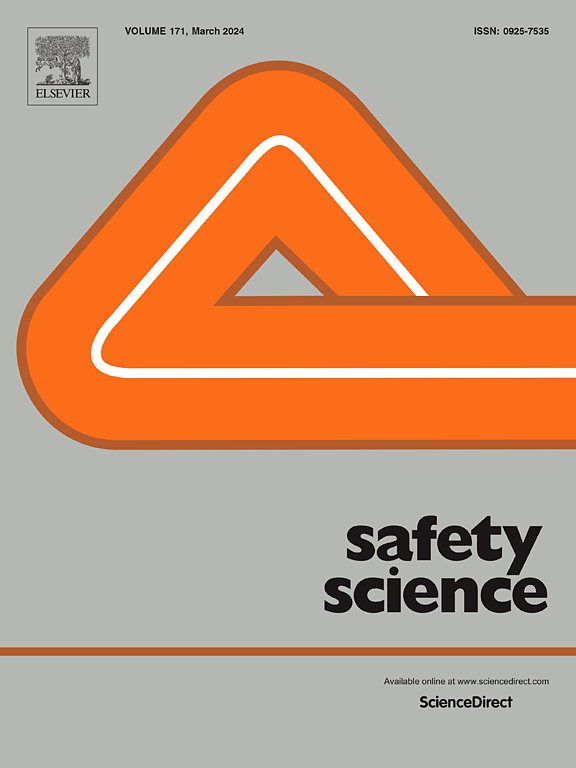Variables influencing change blindness in construction safety
IF 4.7
1区 工程技术
Q1 ENGINEERING, INDUSTRIAL
引用次数: 0
Abstract
Change blindness, a failure to detect changes in visual scenes, can impact workers’ ability to detect hazards and compromise safety on the jobsite. Examining the relationship between this phenomenon and individual characteristics (e.g., personality variables, safety training) may conceivably support safety managers in predicting susceptibility to change blindness. However, little is known regarding variables influencing change blindness in construction safety. To address this knowledge gap, this study examined the association between individual factors such as age, work experience, sex, formal safety training, personality, mindfulness, and injury exposure with change blindness in construction safety settings. To this end, a change detection experiment was conducted to measure participants’ response time and accuracy rate. Hierarchical agglomerative clustering was used to group the continuous dependent variables into analytical categories. Logistic regression was then used to analyze the association of individual factors with both response time and accuracy rate. The results revealed that age and the personality traits of agreeableness (+) and conscientiousness (−) were associated with response time, while mindfulness (+) and injury exposure (+) were associated with the accuracy rate. The findings of this study advance our understanding of variables that impact change blindness. The association of individual factors with change detection performance in construction provides a foundation for subsequent research to understand hazard identification in dynamic environments better. Regarding practice, these individual factors can be used as precursors to predict the susceptibility of workers to change blindness in construction; foreseeably, industry professionals can also utilize the predictive power of these variables to plan preventive actions on the jobsite.
影响建筑安全变化盲目性的变量
变化盲目性,即无法发现视觉场景的变化,会影响工人发现危险的能力,危及工作现场的安全。研究这一现象与个体特征(如个性变量、安全培训)之间的关系,可能有助于安全管理人员预测对变化盲目性的易感性。然而,对施工安全变化盲性的影响因素却知之甚少。为了解决这一知识差距,本研究考察了个人因素(如年龄、工作经验、性别、正式安全培训、个性、正念和伤害暴露)与建筑安全环境中变化盲目性之间的关系。为此,我们进行了一个变化检测实验来测量参与者的反应时间和正确率。采用层次聚类方法将连续因变量归为分析类。然后采用Logistic回归分析个体因素与反应时间和准确率的关系。结果表明,年龄、宜人性(+)和尽责性(−)与反应时间相关,正念(+)和伤害暴露(+)与反应正确率相关。这项研究的发现促进了我们对影响变化盲视的变量的理解。个体因素与施工中变化检测性能的关联为后续研究更好地理解动态环境中的危险识别提供了基础。在实践中,这些个体因素可以作为前兆,预测工人在施工中对改变盲目性的易感性;可以预见的是,行业专业人员也可以利用这些变量的预测能力来计划现场的预防措施。
本文章由计算机程序翻译,如有差异,请以英文原文为准。
求助全文
约1分钟内获得全文
求助全文
来源期刊

Safety Science
管理科学-工程:工业
CiteScore
13.00
自引率
9.80%
发文量
335
审稿时长
53 days
期刊介绍:
Safety Science is multidisciplinary. Its contributors and its audience range from social scientists to engineers. The journal covers the physics and engineering of safety; its social, policy and organizational aspects; the assessment, management and communication of risks; the effectiveness of control and management techniques for safety; standardization, legislation, inspection, insurance, costing aspects, human behavior and safety and the like. Papers addressing the interfaces between technology, people and organizations are especially welcome.
 求助内容:
求助内容: 应助结果提醒方式:
应助结果提醒方式:


